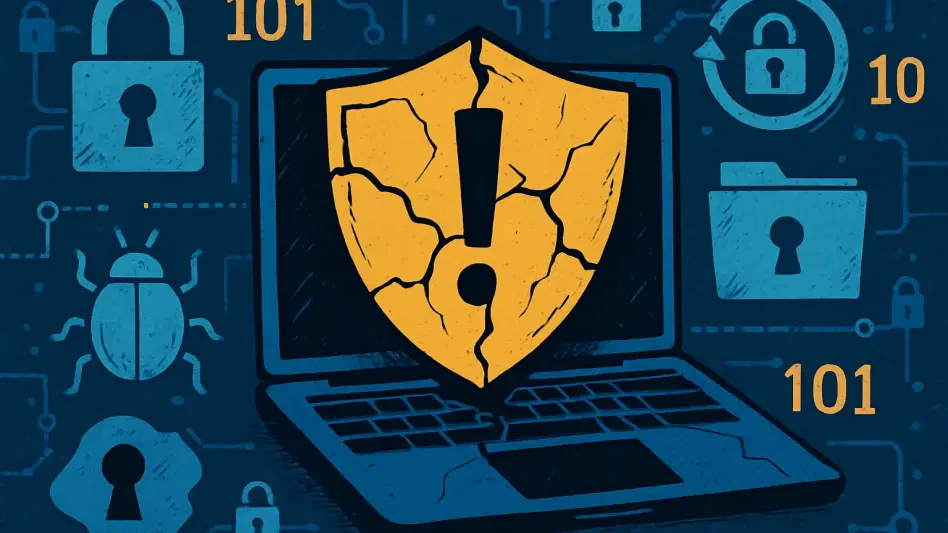Imagine a widely used database software, integral to countless organizations worldwide, harboring a hidden flaw so severe that it could allow attackers to take complete control of systems with just a few lines of malicious code, posing a monumental threat to global cybersecurity. This is the alarming reality facing Redis, an in-memory database solution that powers everything from web applications to cloud services. A newly discovered vulnerability, dubbed RediShell and tracked as CVE-2025-49844, has sent shockwaves through the cybersecurity community due to its maximum severity rating and potential for catastrophic damage. With hundreds of thousands of instances exposed online, the stakes couldn’t be higher for businesses and IT teams scrambling to protect their infrastructure from this critical threat.
Understanding the Vulnerability
Unpacking the Technical Flaw
The RediShell vulnerability stems from a use-after-free memory corruption issue embedded deep within Redis’s source code, a bug that has silently persisted for over a decade. Specifically, it affects systems with Lua scripting enabled—a default setting that allows custom script execution. An authenticated attacker can exploit this flaw by crafting a malicious Lua script to manipulate the garbage collector in the Lua interpreter. This action triggers a condition that lets the attacker escape the sandbox environment, enabling remote code execution on the host system. Such a breach opens the door to devastating consequences, including data theft, malware deployment, and unauthorized access to connected cloud services. The severity of this issue is underscored by its CVSS score of 10.0, marking it as a top-priority concern for any organization relying on Redis for critical operations.
Conditions for Exploitation
While the potential impact of this flaw is immense, exploitation is not without its barriers, which offers a sliver of reassurance for proactive defenders. The key requirement for an attacker to leverage this vulnerability is authenticated access to a Redis instance. This means that systems without proper authentication mechanisms or those exposed to the internet without safeguards are at significantly higher risk. Reports indicate that approximately 330,000 Redis instances are accessible online, with a staggering 60,000 lacking any form of authentication. These unsecured setups are prime targets for threat actors looking to exploit such flaws for nefarious purposes like cryptojacking or integrating systems into botnets. This situation emphasizes the critical need for robust access controls to mitigate the risk of unauthorized entry and subsequent exploitation of this dangerous vulnerability.
Mitigation and Protective Measures
Immediate Steps for Security
In response to the discovery of this severe vulnerability, Redis has acted swiftly by releasing patches across multiple versions, including 6.2.20, 7.2.11, 7.4.6, 8.0.4, and 8.2.2. Organizations are strongly urged to apply these updates without delay to safeguard their systems from potential attacks. For those unable to patch immediately, interim measures can provide a temporary shield. Restricting Lua script execution through access control lists (ACLs) by limiting commands such as EVAL and EVALSHA is a practical step. Additionally, ensuring that only trusted identities are permitted to execute potentially hazardous commands can significantly reduce exposure. These actions, while not a permanent fix, serve as vital stopgaps to protect against the immediate threat posed by attackers seeking to exploit this long-standing flaw in Redis’s architecture.
Long-Term Defense Strategies
Beyond the urgency of patching, this incident highlights a broader need for organizations to reevaluate their approach to securing Redis deployments over the long term. The prevalence of insecure default configurations in many instances underscores the importance of adopting a security-first mindset. Regularly auditing Redis setups to ensure strong authentication protocols are in place is essential, as is minimizing exposure to the public internet wherever possible. Furthermore, integrating continuous monitoring for unusual activity can help detect potential exploitation attempts before they escalate into full-blown breaches. As Redis remains a frequent target for cyber threats, building a culture of vigilance and proactive defense is crucial. By addressing not only this specific vulnerability but also the systemic issues in configuration practices, organizations can better fortify their systems against future risks in an ever-evolving threat landscape.








